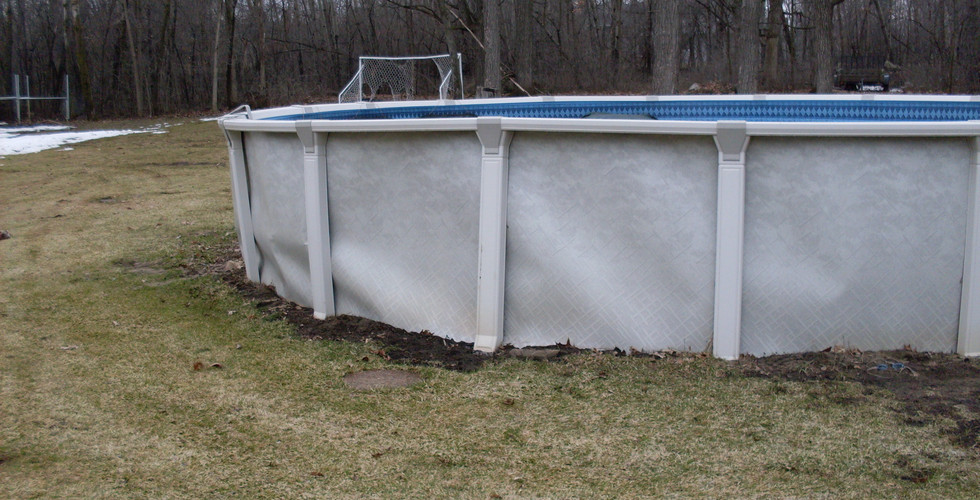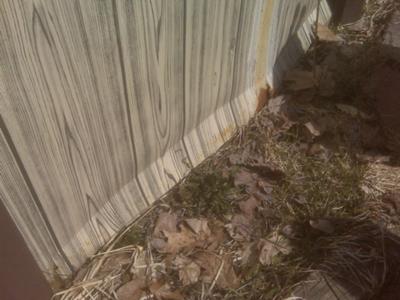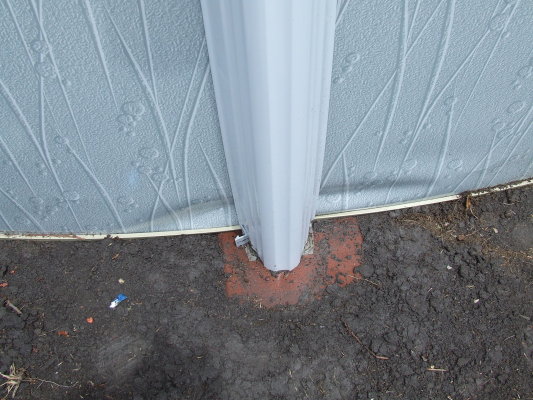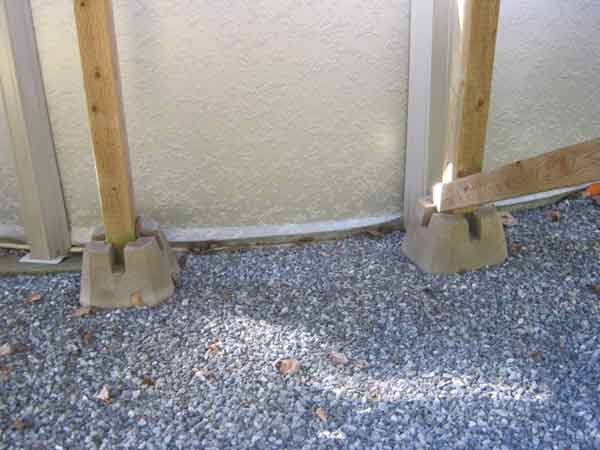Above Ground Pool Installations - Why we DO NOT use patio blocks and sand under our pools
- Michael Bowers
- Jan 30, 2016
- 3 min read

THE LOW COST INSTALLATION
The above photo shows how most cut rate or inexperienced pool installers build their pools.
1: They begin by getting the base (virgin ground) level to within an inch or two.
2: Next they spread a large amount of sand over the general area where the pool will be placed.
3: After they spread the sand out they put the bottom track of the pool on top of the sand and then place patio blocks underneath the bottom plates of the pool and level those out to around 1" of level.
4: Next they assemble the pool
5: After they assemble the pool they use a broom to flatten out the sand.
6: Then they install the pool liner and leave you to fill the pool and install the pump and filter system.
This is a very quick and easy way to install an above ground pool, which allows builders to get away with charging substantially lower costs than a quality pool builder. However, this pool once installed is destined to fail within a few years.
THE BAD
1: FROST DAMAGE: The patio blocks that are put in the sand will heave up on the bottom of the pool track when the frost sets in. This happens in the same way that you may see farmers picking rocks in their fields in spring before planting. Frost eventually will push anything buried within a few feet of the surface out of the ground. In this case the pool wall and bottom track

face the brunt of the force of the heaving patio blocks. Over a period of 2-3 years of repeatedly facing the abuse of the force from the frost the bottom of the pool wall eventually wears out and buckles or folds under.
This buckling happens right at the base of the pool wall so if you have any dirt or stone backfilled against the pool you may not see it. You will notice that the top of the pool wall has dropped and there is a gap at the top of the pool and your pool liner may have actually came off the top of the pool. With the use of patio blocks, it is not if this will happen to your pool its a matter of when. Which is why Pool Pros does not use patio blocks on any of our above ground pool installation.
2: SETTLING: Putting the weight of the pool on a base of sand will lead to settling. The pool may be close to being level once the pool is initially installed, but it will eventually settle. Once the pool is filled with any where from 12,000 - 19,000 gallons of water that weight will cause settling. A filled pool weighs anywhere from 99,600 lbs or 45 tons to 157,000 lbs or 72 tons. Sand cannot hold that kind of load without moving.
3: WASH OUT DAMAGE: When your pool eventually leaks which is 100% innevitable, the sand base will wash out. When sand gets wet it liquifies and flows easily. The sand will flow out from under the bottom track of the pool with the water from the leak and cause severe damage to your above ground pool. Sand is only meant to be used as a buffer between the ground and the pool liner. It should never be used under the track and bottom plates of a pool.
THE MORAL OF THE STORY
The question you need to ask yourself is do you want to save a few hundred dollars now on installation and spend thousands in a few years to repair or replace a pool installed in this manner , or do I hire a professional that builds pools the right way and have many years of trouble free pool use. Like everything in life, you get what you pay for. If an installer is not using a system similar to Pool Pros Tundra Loc Installation System, than you are taking a huge gamble. Make the right choice the first time and choose Pool Pros . When Quality Counts, Count on Pool Pros.



















